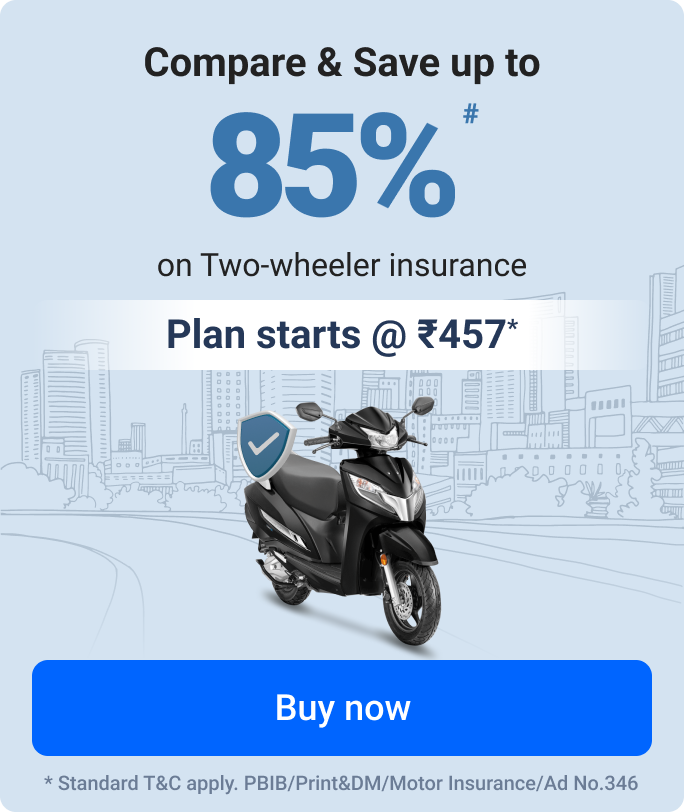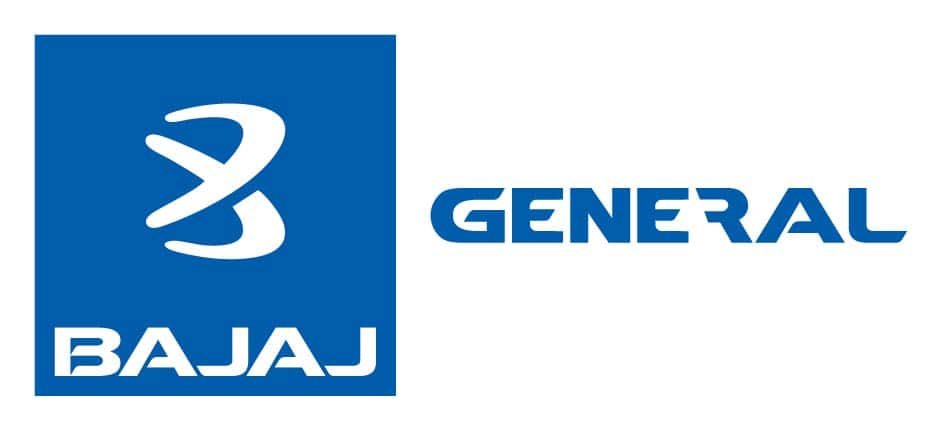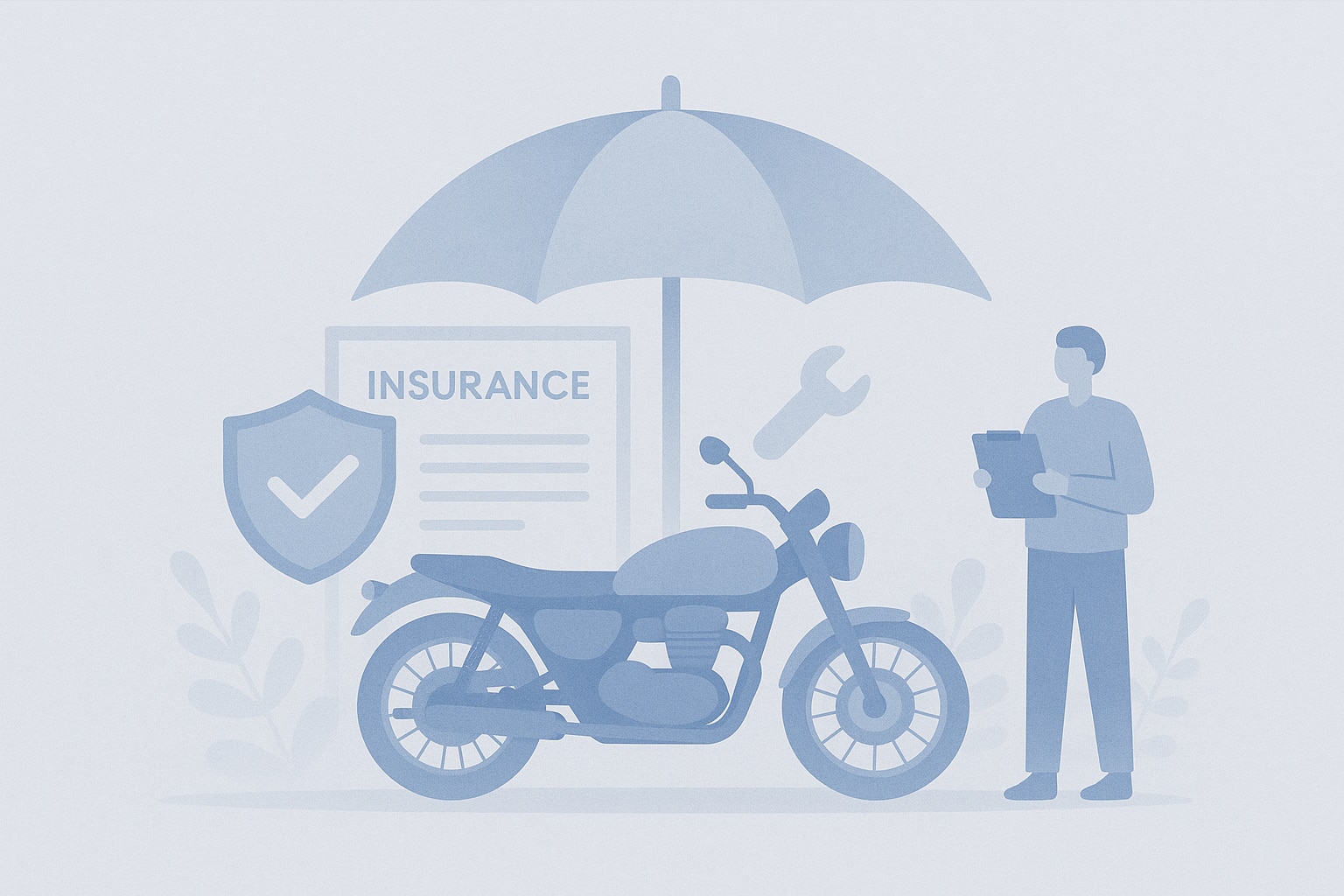What Does CC in Your Bike Mean?
The engine is one of the most significant mechanical parts of a bike. It impacts almost everything associated with it, from the performance of the bike to the insurance premium you have to pay is directly related to your bike's engine. The cubic capacity (CC) of your bike's engine is also used to determine the third party bike insurance premium.
What is 'CC' in Two-Wheelers?
A bike's engine is built with a combination of chambers that are used for the combustion of fuel in a cylinder. The amount of fuel mixed with air and burnt in a single stroke defines the cubic capacity of the engine's cylinder.
CC refers to both Cubic Capacity or the cylinder capacity of your two-wheeler. Its associated number defines the volume of your bike's engine's chamber. The higher the number, the higher the capacity of the cylinder would be.
A larger chamber allows the engine to produce more power as more air and fuel can be combined in the chamber to generate power for the vehicle. This increased compression of the fuel and air in the chamber gives out higher output for the bike in terms of torque and horsepower.
Please note the engine capacity is different from the cubic capacity (CC) which refers to the process of the engine completing one cycle using the combined capacity of all cylinders installed.
Impact of CCs on a Bike's Performance
Different bikes come with different amounts of cubic capacities equipped with their engines. The cubic capacity of your bike can be anywhere between 50 CC - 2000 CC. .
The performance of your bike is directly proportional to the cubic capacity of the engine. As it was discussed earlier, increasing cubic capacity would mean a higher output given by the engine, hence resulting in better performance. Here, performance is referred to as faster acceleration by the bike, better power to weight ratio, as well as the ability to achieve high top speeds. Hence, all performance bikes come with higher engine cubic capacity.
Impact of CCs on a Bike's Cost
Simply put, higher the cubic capacity of a bike's engine, higher is its price as you'll get considerably more performance from a 350cc bike than from a 100cc bike.
Moreover, since increasing engine CC induces better bike performance, it becomes important for the bike's overall mechanical strength to be improved too. Hence, a high performance bike would need to be made mechanically stronger as well, by equipping it with improved better aerodynamics, brake pads, exhaust systems, suspension as well as quality materials that won't quickly wear and tear at high speeds.
All of this would involve higher cost, hence a high-performance bike is always costlier than a day-to-day runner and has a better CC as well.
Does the Bike CC Affect the Insurance Premium?
Now that you have understood how the engine's cubic capacity has a direct impact on your bike's overall performance, mileage and how much output the engine will produce concerning torque and horsepower. It is now important to note that the CC of your bike directly influences the bike insurance premium, no matter whether you opt for a third party bike insurance or a comprehensive bike insurance. .
-
Impact of CCs on Third-Party Insurance
A third party bike insurance is a legally mandatory policy for all bike owners. A TP bike insurance only covers you against damages caused to a third party property, injuries, or even an unfortunate accident resulting in their death.
The premium rates for a third-party bike insurance plan are determined by the IRDAI. Certain slab rates have been defined by the official regulator based on the engine capacity of the bike. Following are the most recent and revised slab rates for two-wheelers:
Bike Engine Capacity Single Year TP Bike Insurance 5 Year TP Bike Insurance < 75cc ₹ 538 ₹ 2,901 75cc - 150cc ₹ 714 ₹ 3,851 150cc - 350cc ₹ 1,366 ₹ 7,365 > 350cc ₹ 2,804 ₹ 15,117 -
Impact of CCs on Comprehensive Insurance
While third-party insurance rates are standard prices across all insurers, it is not the same for comprehensive insurance.
The premium for a comprehensive bike insurance differs mainly because of the difference in the Insured Declared Value (IDV) of the bike. Another major driver of the premium rates in this scenario is the component of Own Damage (OD).
For a third-party insurance plan, the premium is mainly calculated based on the cubic capacity of the bike's engine. However, this is not the case for comprehensive bike insurance which takes into account other factors in addition to the cubic capacity of the engine.
Make sure that you check all the factors before buying a comprehensive insurance policy so that you don't end up paying a higher premium for coverage you don't even want.
Factors that Affect the Insurance Premium
Apart from the cubic capacity of a bike's engine that significantly impacts insurance premium rates, you can now check the other factors that also impact your bike insurance premium.:
- Model type and make: Luxury/premium/performance bikes will always carry a higher premium tag, while it will be on the opposite for daily use commuter bikes. Since, high end models carry a higher risk on the road and their repair cost will be slightly more expensive, their premium is also higher.
- Year of bike's manufacture: As vehicles are depreciable assets and their value decreases over time, the year of manufacture directly influences the insurance premium. As the bike's value decreases over time, the bike insurance premium also reduces.
- Geographical location: The location where your bike is registered also matters as the risk of riding in a tier-1 metropolitan city is a lot more when compared to rural areas and tier-2 cities. Hence the premium in tier 1 cities is always higher.
FAQs
-
Q1. Is higher CC better?
Ans A higher CC bike engine does not mean its better but means that it offers more power, better acceleration and top speed. However, you must note that bikes with a high cc are more expensive, heavier, and less fuel-efficient. So you must always choose the most optimal CC for your motorcycle as per your needs and riding style. -
Q2. What does 125cc mean on a bike?
Ans ‘125cc’ on a bike denotes the cubic centimeter (cc) engine displacement. A 125cc bike is generally lighter, fuel-efficient, and easier to handle than larger bikes.
^The buying/renewal of insurance policy is subject to our operations not being impacted by a system failure or force majeure event or for reasons beyond our control. Actual time for a transaction may vary subject to additional data requirements and operational processes.
*TP price for less than 75 CC two-wheelers. All savings are provided by insurers as per IRDAI-approved insurance plan. Standard T&C apply.
*Rs 538/- per annum is the price for third party motor insurance for two wheelers of not more than 75cc (non-commercial and non-electric)
#Savings are based on the comparison between the highest and the lowest premium for own damage cover (excluding add-on covers) provided by different insurance companies for the same vehicle with the same IDV and same NCB.
*₹ 1.5 is the Comprehensive premium for a 2015 TVS XL Super 70cc, MH02(Mumbai) RTO with an IDV of ₹5,895 and NCB at 50%.
*₹457/- per annum (₹1.3/day) is the price for third-party motor insurance for private electric two-wheelers of not more than 3KW (non-commercial). Premium is payable annually. The list of insurers mentioned is arranged according to alphabetical order of the names of insurers respectively. Policybazaar does not endorse, rate or recommend any particular insurer or insurance product offered by any insurer. The list of plans listed here comprise of insurance products offered by all the insurance partners of Policybazaar. For the complete list of insurers in India, refer to the Insurance Regulatory and Development Authority of India website: www.irdai.gov.in

























